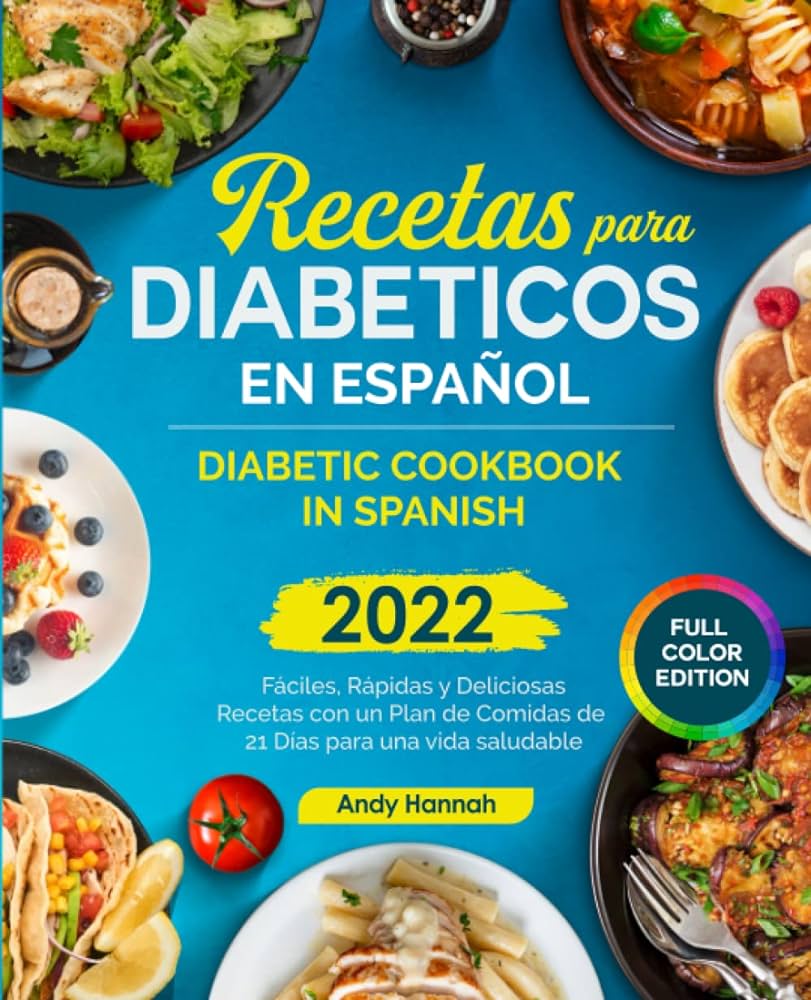Living with diabetes can be a challenging journey, especially when it comes to meal planning. However, having diabetes doesn’t mean you have to give up on delicious and satisfying food. With the right recipes and ingredients, you can enjoy a wide variety of tasty dishes while keeping your blood sugar levels in check. In this article, we will explore diabetic recipes in Spanish, providing you with a range of flavorful options to incorporate into your diet.
The Importance of Diabetic-Friendly Recipes
Diabetes is a chronic condition that affects the body’s ability to regulate blood sugar levels. Managing diabetes requires a careful balance of healthy eating, physical activity, and medication. A well-planned diet plays a crucial role in controlling blood glucose levels, reducing the risk of complications, and maintaining overall health.
Traditional Spanish cuisine is known for its rich flavors and ingredients such as rice, potatoes, and bread. However, these staples can lead to blood sugar spikes, making it challenging for individuals with diabetes to maintain stable glucose levels. By adapting traditional recipes and incorporating diabetic-friendly ingredients, you can enjoy the flavors of Spanish cuisine without compromising your health.
Exploring Diabetic-Friendly Spanish Ingredients
Before diving into specific recipes, let’s take a look at some diabetic-friendly Spanish ingredients that can be used to create healthy and delicious meals:
- Olive Oil: A staple in Spanish cooking, olive oil is a heart-healthy fat that can help improve insulin sensitivity.
- Seafood: Spain’s long coastline offers an abundance of fresh seafood options, including fish rich in omega-3 fatty acids, which are beneficial for heart health.
- Legumes: Beans, lentils, and chickpeas are low glycemic index foods that provide a good source of protein and fiber.
- Vegetables: Incorporate a variety of colorful vegetables like tomatoes, peppers, onions, and leafy greens to add flavor, texture, and essential nutrients to your meals.
- Herbs and Spices: Flavor your dishes with herbs and spices such as garlic, paprika, saffron, and oregano, which can enhance taste without adding extra sodium or sugar.
Delicious Diabetic Recipes in Spanish
Now that we have explored some diabetic-friendly Spanish ingredients, let’s move on to some mouthwatering recipes that will satisfy your taste buds and help you maintain stable blood sugar levels.
1. Spanish Seafood Paella
Paella is a classic Spanish dish that traditionally includes rice, but this diabetic-friendly version replaces rice with cauliflower rice, making it a low-carb alternative. Here’s how to make it:
Ingredients:
- 1 pound of shrimp
- 1 pound of mussels
- 1 pound of clams
- 1 cup of cauliflower rice
- 1 onion, diced
- 2 cloves of garlic, minced
- 1 red bell pepper, sliced
- 1 tomato, diced
- 1 teaspoon of smoked paprika
- 1/2 teaspoon of saffron threads
- 1/2 cup of low-sodium chicken broth
- 2 tablespoons of olive oil
- Fresh parsley for garnish
- Salt and pepper to taste
Instructions:
- In a large pan, heat olive oil over medium heat. Add onions, garlic, and bell pepper, and sauté until softened.
- Add tomatoes, smoked paprika, and saffron threads to the pan. Cook for another 2 minutes.
- Add cauliflower rice and chicken broth to the pan. Stir well and bring to a simmer.
- Add shrimp, mussels, and clams to the pan. Cover and cook for 5-7 minutes or until the seafood is cooked through and the shells have opened.
- Season with salt and pepper to taste. Garnish with fresh parsley before serving.
This flavorful seafood paella is a perfect example of how you can adapt traditional Spanish recipes to make them diabetic-friendly. The cauliflower rice is a low-carb alternative to traditional rice, reducing the impact on blood sugar levels while still providing a satisfying texture.
2. Spanish Tortilla with Sweet Potatoes
Tortilla española, or Spanish omelette, is a popular dish in Spain. This version replaces traditional white potatoes with sweet potatoes, adding extra nutrients and a natural sweetness. Here’s how to make it:
Ingredients:
- 2 medium sweet potatoes, peeled and thinly sliced
- 1 onion, thinly sliced
- 6 eggs
- 2 tablespoons of olive oil
- Salt and pepper to taste
Instructions:
- Heat olive oil in a large non-stick pan over medium heat.
- Add sweet potatoes and onions to the pan. Cook for 10-12 minutes or until the sweet potatoes are tender.
- In a separate bowl, beat the eggs and season with salt and pepper.
- Pour the beaten eggs over the sweet potatoes and onions in the pan. Make sure the mixture is evenly distributed.
- Cook for 8-10 minutes or until the eggs are set on the bottom.
- Flip the tortilla by placing a plate over the pan and carefully turning it upside down. Slide the tortilla back into the pan to cook the other side for an additional 8-10 minutes.
- Once cooked, remove from heat and let it cool before slicing into wedges. Serve warm or at room temperature.
This Spanish tortilla with sweet potatoes is a nutritious and satisfying dish that can be enjoyed for breakfast, lunch, or dinner. The sweet potatoes provide a lower glycemic index compared to white potatoes, making it a suitable option for individuals with diabetes.
Conclusion
Living with diabetes doesn’t mean sacrificing the enjoyment of food, especially when it comes to Spanish cuisine. By making simple modifications and using diabetic-friendly ingredients, you can create a wide array of delicious and healthy meals. Whether you’re craving seafood paella or a hearty tortilla, these diabetic recipes in Spanish offer a flavorful way to manage your blood sugar levels without compromising on taste.
Frequently Asked Questions (FAQs)
1. Can I use other seafood in the Spanish seafood paella recipe?
Yes, you can customize the seafood paella recipe to your liking. You can add other seafood such as squid, scallops, or fish fillets.
2. Can I substitute regular rice for cauliflower rice in the paella recipe?
Yes, if you’re not following a low-carb diet, you can use regular rice instead of cauliflower rice. However, keep in mind that regular rice has a higher glycemic index, so it may affect your blood sugar levels differently.
3. Are there any vegetarian Spanish recipes suitable for diabetics?
Absolutely! Spanish cuisine offers various vegetarian options that can be adapted for individuals with diabetes. For example, you can make a vegetable paella using a variety of colorful vegetables and vegetable broth.
4. Can I incorporate fruits into diabetic-friendly Spanish recipes?
Fruits can be a healthy addition to your diabetic diet. However, it’s essential to choose fruits with a lower glycemic index and consume them in moderation. Berries, apples, and citrus fruits are generally good options for individuals with diabetes.
5. Can I enjoy Spanish desserts as a person with diabetes?
While traditional Spanish desserts like flan and churros may not be suitable for individuals with diabetes due to their high sugar content, there are diabetic-friendly dessert alternatives available. For example, you can make a sugar-free almond cake using almond flour and a natural sugar substitute.
Summary
Diabetic recipes in Spanish provide a flavorful and healthy way to manage blood sugar levels while enjoying the rich flavors of Spanish cuisine. By substituting ingredients and making simple modifications, you can create dishes like seafood paella and Spanish tortilla that are suitable for individuals with diabetes. Incorporate diabetic-friendly ingredients such as olive oil, seafood, legumes, and vegetables to ensure balanced and delicious meals. Remember to consult with a healthcare professional or registered dietitian for personalized advice on managing diabetes through diet.




